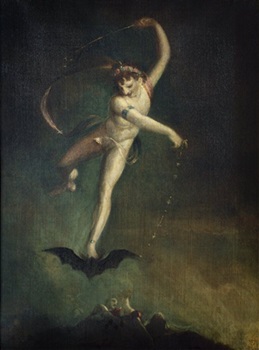
Important Themes
The Tempest raises issues about authority. A number of rulers are shown in the play: Prospero as ruler of the island, the King of Naples, Antonio, the ruling Duke of Milan. Think about what each of these men is like as a ruler. When considering Prospero, think too of his various subjects, from his daughter Miranda to his very different (and differently treated) servants Ariel and Caliban.
The characters of Miranda and Caliban address issues--quite current in the day--about the role of nature and nurture in the development of a person's character. To this day, it is unclear which human characteristics are owed to genetic inheritance or to social surrounding; look for statements in this play that address this issue.
There is also a great deal of doubling in The Tempest: Caliban and Ariel are certainly meant as parallel characters to be contrasted with one another; the two brothers, Antonio and Prospero, are another pair, along with two more brothers, Sebastian and Alonso; and there are thematic pairs, the most important of which, perhaps, is dream and waking contrasted with reality and fantasy.
In addition to these concerns, think also about the relation of the parent to the child: it could be argued that Prospero acts in a parent role for Miranda, Ariel, and Caliban; the King and his son are also featured in this sort of relation.
Recently, scholars have been looking at this play through a post-colonial lens--that is, considering the influence of imperialist doctrine (what countries in the 1500s to--arguably--the present consider as a right: the "discovery," colonization, conversion, and otherwise "civilizing" of other countries) in this play. Caliban can be seen as a new world native, and Prospero as the colonizer. Bedford/St. Martin's has published the Tempest as part of their "Case Study in Critical Controversy" series looking in detail at this post-colonial viewpoint (ed. Graff and Phelan; 2000; ISBN: 0-312-19766-7 (paper)). This edition also reprints excerpts from a number of the probable sources listed above.